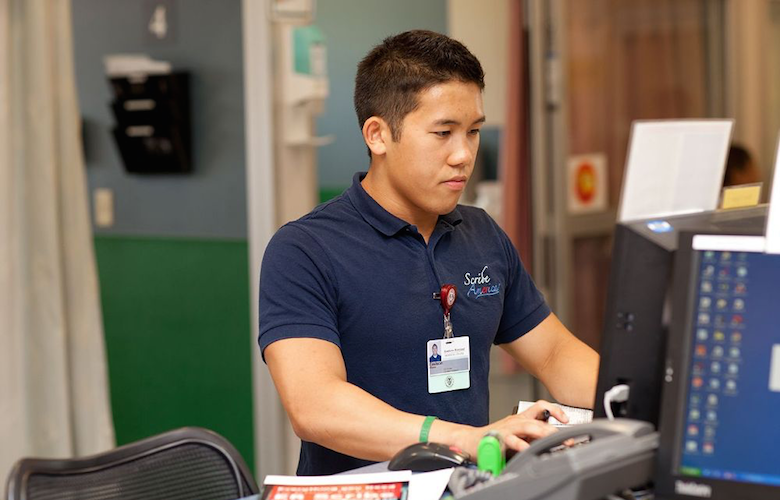Recently, there’s been a lot of misinformation floating around about medical scribes. It’s understandable that physicians and hospitals may be wary of the idea if they’ve never worked with scribes. A lot of ideas for the “next best thing” in medicine are touted at seemingly every turn, it’s true. However, those fears should be allayed by the facts. Here’s a look at some of the key areas of concern that have been raised recently.
Scribes boost the bottom line
As we recently detailed, using scribes can add $2500–$12,000 per patient in direct and indirect revenue to your practice or facility, depending on the specialty. That’s because improved detail of notes in the patient record result in better charge capture and fewer denials through documented defense of each claim — all of which significantly boosts revenues. In addition, physicians can see approximately 5 to 8 more patients each day when scribes are used to create the patient record during the visit. Even for a primary care physician, this can mean an extra $105,000 a year for the practice. Rather than being a line-item expense, medical scribes are actually a boost to the bottom line for hospitals.
Scribes make patient encounters more meaningful
Scribes help physicians see more patients, in part by reducing the amount each patient encounter lasts. But that’s not necessarily a bad thing, because the time that’s cut from the visit is the time the physician would have spent on taking notes, or having the patient repeat what was just said so that the physician could record the information accurately. Although it’s time spent “face-to-face” with the patient, it’s not exactly quality face time, is it? One study found that physicians spend 9 minutes less per average visit — but an average of 5 minutes more interacting with patients directly. Physicians are able to listen and respond more thoroughly, and patients go away happier with their care; it’s a win-win. Take it from an actual patient experience:
“In my one scribe-assisted visit, the doctor looked me in the eye as we talked. That helped me trust her, even though we had just met. Our face-to-face conversation sure beat visits I’ve had with my primary-care doctor. She spends most of our time together pecking away at the computer, her back facing mine.”
Patients feel comfortable with a scribe in the room
Higher levels of patient satisfaction might explain why most patients — 80%, in fact — feel comfortable with a scribe in the room. But for the 1 patient in 5 who isn’t comfortable, the solution is a simple one: communication, the very thing that scribes free physicians to do. When entering the room for the patient visit, the physician should explain who the scribe is, why he or she is there, and reassure that the scribe is certified and current with American College of Medical Scribe Specialists (ACMSS) guidelines. ACMSS training ensures that scribes understand their duties and responsibilities with respect to HIPAA and patient privacy, and you shouldn’t accept scribes without this qualification. It’s not only a reassurance for your hospital or practice, but also for the patient.
It’s a fact that scribes don’t make the medical decisions that save lives — but, equally, they can enhance the fiscal health of hospitals and practices, improve the working lives of doctors, and enhance patient satisfaction.




